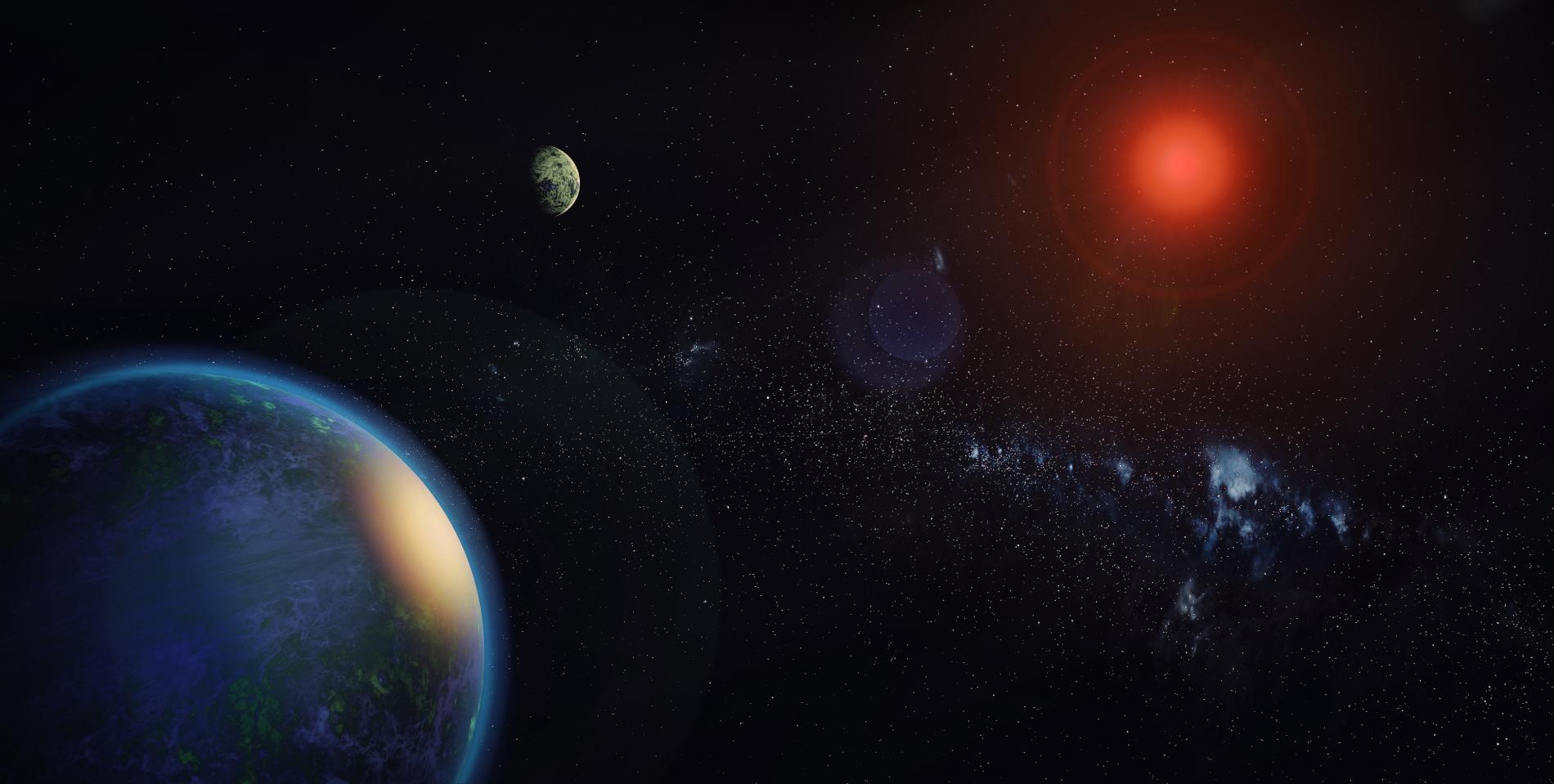ESPRESSO and CARMENES discover two exo-Earths in the habitable zone of a star close to the Sun
The Institute of Astrophysics of Andalusia (IAA-CSIC) participates in the discovery of a multiple planetary system around GJ1002
An international science team has found two Earth-like planets in orbit around the star GJ 1002, a red dwarf less than 16 light-years from the Solar System. Both planets are in the habitable zone of the star, and their proximity makes them ideal candidates for atmospheric studies. The discovery has been made possible thanks to ESPRESSO (located at the Very Large Telescope, in Chile) and CARMENES, located at the 3.5-metre telescope of Calar Alto Observatory and co-developed by the Institute of Astrophysics of Andalusia (IAA-CSIC). It has also relied on photometric data from the Sierra Nevada Observatory, belonging to the IAA-CSIC, which are essential for the confirmation of planet candidates.
"Nature seems determined to show us that terrestrial planets are very common. With these two, we already know of seven in planetary systems very close to the Sun", says Alejandro Suárez Mascareño, a researcher at the Instituto de Astrofísica de Canarias (IAC) who heads the study.
Both planets have masses similar to that of the Earth and are located in the habitable zone of their star, or the region in which the pressure and temperature conditions would allow the existence of liquid water on the surface. GJ 1002 b, the inner planet, takes just over ten days to complete one orbit of its star. GJ 1002 c, on the other hand, takes just over twenty-one days.
GJ 1002 is a red dwarf with only one eighth the mass of the Sun. As a cool and faint star, its habitable zone is very close to it. "These stars are very interesting because of their coolness; this is a type of object that we are looking to explore in depth in the near future with the infrared arm of CARMENES and with MARCOT, a modular astronomical facility for high-resolution spectroscopy that is being developed at Calar Alto Observatory", says Pedro J. Amado, the IAA-CSIC researcher who coordinated the development of CARMENES and who is participating in the discovery.

The closeness of the star makes the two planets, especially GJ 1002 c, excellent candidates to characterise their atmospheres by analysing the light they reflect or their thermal emission. For example, the future ANDES spectrograph, which will be located at the Extremely Large Telescope (ESO) and in whose development the IAC and the IAA-CSIC are participating, will be able to study the presence of oxygen in the atmosphere of GJ 1002 c. Both planets also meet the characteristics to become targets for the future LIFE space mission, currently in the study phase.
Because of its low temperature, GJ 1002 is too faint in visible light for most spectrographs to measure the small oscillations that the planets produce in the star, or their variations in radial velocity. The discovery was made possible by a collaboration between the ESPRESSO and CARMENES consortia.
GJ 1002 was observed by CARMENES between 2017 and 2019, and between 2019 and 2021 by ESPRESSO. The design of CARMENES, which is much more redshifted than other radial velocity spectrographs, allowed it to study it from the 3.5-metre telescope at Calar Alto. The combination of ESPRESSO and the light-gathering power of the Very Large Telescope made it possible to obtain measurements with an accuracy of just thirty centimetres per second, unreachable for almost any other instrument in the world. Finally, photometric measurements obtained from the Sierra Nevada Observatory (OSN, IAA-CSIC) confirmed the detections. "Either of the two groups would have had a lot of difficulties if they had tackled this work independently. Together we were able to go much further than we would have done separately", concludes Alejandro Suárez Mascareño (IAC).

Suárez Mascareño et al. "Two temperate Earth-mass planets orbiting the nearby star GJ 1002 ⋆". Astronomy & Astrophysics, Dec 2022.
Instituto de Astrofísica de Andalucía (IAA-CSIC)
Unidad de Divulgación y Comunicación
Silbia López de Lacalle - sll[arroba]iaa.es - 958230676
https://www.iaa.csic.es
https://divulgacion.iaa.csic.es

